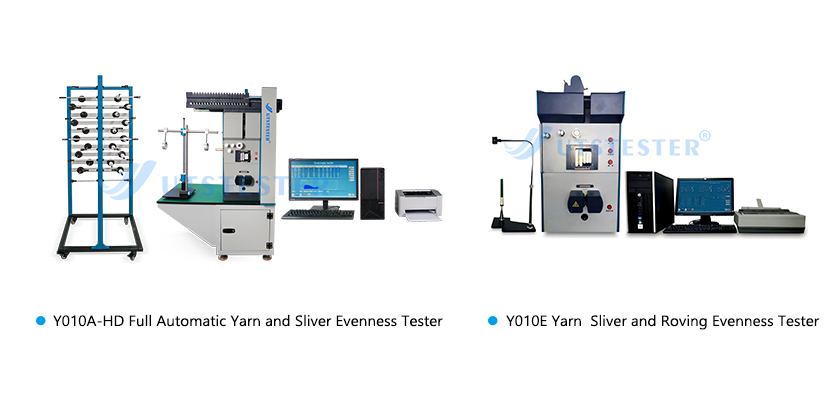 +86 152 6060 5085
+86 152 6060 5085
 +86 152 6060 5085
+86 152 6060 5085
1. What is yarn evenness testing?
Yarn evenness testing, in simple terms, is the measurement of the uniformity of yarn thickness along its length. As the basic raw material for textile products, the quality of yarn directly impacts the performance and appearance of subsequent textile products. Yarn evenness, as one of the key indicators of yarn quality, directly affects the quality of textile products.
2. The significance of yarn evenness testing
Conducting yarn evenness testing serves multiple important purposes. On one hand, it helps assess the quality level of yarn. Yarn with even thickness ensures clear fabric patterns, uniform color, and reduced defects during subsequent processing. For example, in weaving processes, uneven yarn may cause defects such as horizontal bands or clouding in the fabric, severely affecting its aesthetic appeal and practicality. On the other hand, testing can promptly identify issues in the spinning process, helping manufacturers adjust process parameters, optimize production workflows, improve production efficiency, and reduce production costs. For instance, if test results indicate that uneven yarn evenness is caused by a malfunction in the draw-off mechanism of the ring spinning machine, the company can target repairs or adjustments to the draw-off mechanism to improve yarn quality.
3. Yarn Evenness Testing Methods
In practice, there are several methods available for testing yarn evenness.
Among these, the traditional visual inspection method involves experienced inspectors directly observing the appearance of the yarn with the naked eye to assess its evenness. While this method is simple and straightforward, it is highly subjective, as different inspectors may have varying criteria for judgment, and it may be difficult to accurately detect subtle unevenness in the yarn.
The capacitive yarn evenness tester method utilizes the difference in dielectric constants between yarn and air. As yarn passes through capacitive plates, the capacitance value changes with yarn thickness. By detecting changes in capacitance, the method reflects yarn evenness. This method offers fast testing speed and high precision, accurately measuring unevenness in short yarn segments.
Another method is the photoelectric yarn evenness tester, which is based on the varying degrees of light obstruction by the yarn. It converts light signals into electrical signals through photoelectric conversion and then analyzes the yarn's evenness. This method is sensitive to changes in the yarn's surface morphology and can effectively detect defects such as yarn fuzz and details.
4. Yarn Evenness Testing Criteria
In yarn evenness testing, there are a series of important criteria used to quantify the test results. The Average Deviation Coefficient (U%) is one of the commonly used criteria, reflecting the degree of deviation between the actual linear density of each segment of the yarn and the average linear density. The smaller the U% value, the more uniform the yarn evenness. The coefficient of variation (CV%) is also used to measure yarn unevenness, similar to the average deviation coefficient, but with a slightly different calculation method. A lower CV% value indicates better yarn quality. Additionally, there is the blackboard yarn evenness test, which involves winding the yarn around a blackboard and comparing it to a standard sample to evaluate the yarn's evenness grade, categorized into superior, first-class, second-class, etc. A higher grade indicates better yarn evenness.
In the entire textile industry, yarn evenness testing plays a crucial role. From spinning mills to weaving mills, and then to garment processing factories, each stage has strict requirements for yarn evenness. For spinning mills, good yarn evenness test results indicate that the yarn they produce is of high quality, capable of meeting the needs of downstream enterprises, thereby enhancing the company's market competitiveness. Weaving mills use yarn with uniform evenness to produce stable-quality, aesthetically pleasing fabrics, reducing defect rates and improving economic efficiency. Garment processing plants utilize high-quality yarn fabrics to create comfortable, stylish clothing products that appeal to consumers. In summary, yarn evenness testing runs throughout the entire textile supply chain, serving as a critical component in ensuring textile quality and promoting the healthy development of the textile industry.

Email: hello@utstesters.com
Direct: + 86 152 6060 5085
Tel: +86-596-7686689
Web: www.utstesters.com